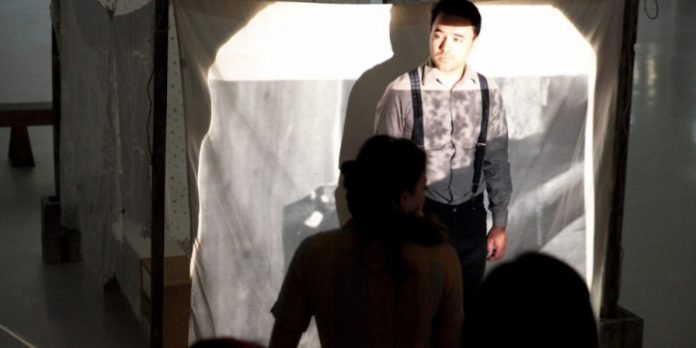With thousands of guests having just visited the PNE last month, many would have stopped in for a visit at the livestock buildings. What many will not have known as they visited the curret four-legged residents, is those same buildings were tragically home to two-legged residents as well.
On December 7, 1941 Canadian Prime Minister Mackenzie King issued a proclamation of war against Japan following the attack on Pearl Harbour. Three months later, Canada’s War Measures Act led to the forced removal of Canadians of Japanese descent from British Columbia.
Before being sent to internment camps in British Columbia’s interior, or other work camps across the country, some 8,000 were forcibly removed from their homes and initially detained in the exhibition buildings and stables at Hastings Park.
To mark the 75th anniversary of the Japanese-Canadian internment, Vancouver’s Universal Limited Theatre moves out of the theatre and into the Hastings Park livestock building for Japanese Problem.
“As a teen I would go to the PNE and Playland and never really knew Canadians were interned at Hastings Park,” says co-creator Yoshié Bancroft. “I had known a little about the Japanese-Canadian incarceration.”
A second generation Japanese-Canadian, Bancroft admits the project was routed in her lack of knowledge of this dark time in Canadian history.
“I’m approaching this project from the point-of-view as a Canadian who grew up without knowing about the internment,” she says. “It is not something I learned about in school, and it is baffling to me that it is not common knowledge.”
“You walk into the stalls and the first Thing you smell is the feces. It is hard to believe there were humans forced to live in these livestock stalls.” – Yoshié Bancroft
Partnering with Burnaby’s Nikkei National Museum & Cultural Centre, Bancroft and co-creator Joanna Garfinkel gathered stories from survivors and their families during a visit to the Kootenays. It proved to be be a sometimes difficult process.
“There was this general sense of not wanting to talk about the past in the Japanese-Canadian community which has been tricky to navigate,” says Bancroft. “There are others though who really wanted to share their stories.”
With few survivors left alive, or willing to talk of their firsthand experience at Hastings Park, Bancroft and Garfinkel also looked to historical records and online research to supplement the stories used in their play.
Based on their research, Japanese Problem takes the shape of a historical reenactment inside one of the stalls used to house the interred, but with an eye also to the present.
“It was important for us to share the historical aspect of the space, but also draw attention to the fact racism is still prevalent today,” says Bancroft.
In fact, as recent as last November pro-Trump advocate Carl Higbie insisted the United State’s own Japanese internment during World War II was precedent for the current president’s proposed Muslim registry.
“Every survivor we interviewed has mentioned comparisons to our current world,” says Garfinkel. “Not one of us could have imagined, when we started on this project over a year ago, that we would have heard of an administration mention the Japanese-American incarceration as a positive example.”
While Japanese Problem has also been designed as a touring production, Bancroft says performing at Hastings Park will draw attention to the historical significance of the space, something she has learned first-hand.
“You walk into the stalls and the first thing you smell is the feces,” she says. “It is hard to believe there were humans forced to live in these livestock stalls. It is a vivid reminder of what they endured.”
Japanese Problem plays at the Hastings Park livestock building from September 22-30. Visit https://japaneseproblem.ca for tickets and information.

